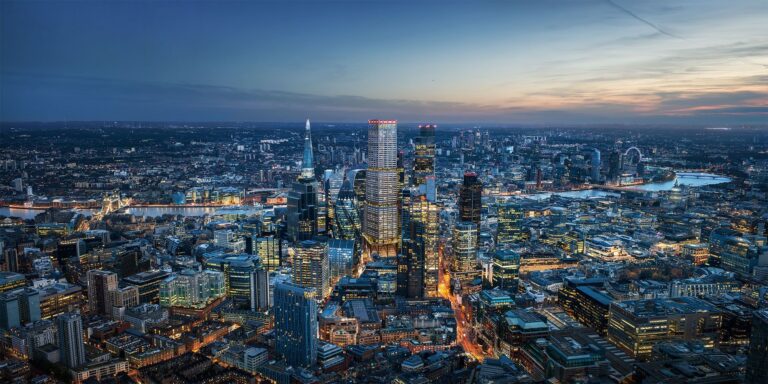Robert Hulse, well-known around Rotherhithe after he founded and ran The Brunel Museum for many years, has not always lived in SE London, but his journey here has been just as interesting as the Brunels whom he reveres, writes Michael Holland.
Born in Chester and brought up in Yorkshire and Lancashire, Robert has always been interested in history and recalls his first and worst lesson as a 9-year-old: ‘It was called Dates!’ he says, emphasising his negativity on ‘Dates’. ‘History is not about dates, history is about stories. Excitement, fear and sadness. Empathy. Understanding what it was like for other people and why they did what they did, and in that process understanding ourselves.’
That interest stayed with him though stayed in the background while life happened. I asked about jobs he had done in the past and a list of adventures followed: sailing to the Arctic, Casablanca, Russia and the Holy Land; working on a farm, in a factory and as a footbridge inspector!
That was all before university, and after his English degree at Oxford the young Hulse moved to London ‘to convert southerners’, he jokes.
Following two years in an international bank, Robert changed his world completely by joining a community arts theatre group that toured the UK, Europe and often came to Southwark. Fully bitten by the acting bug, he was a founding member of BARC (British American Repertory Company) touring Britain and America before setting up a community theatre in the Near East where he taught theatre.

Flying Farmyard came next – taking sheep and goats to schools in a purpose built lorry. ‘We taught children about spinning and weaving and making cheese and butter,’ he explains.
With all this teaching going on in one form or another, Robert went back to qualify as a teacher of Drama and English. ‘I also taught Film & Drama, Serious Comedy and Presentation & Communication at City University,’ he adds as an afterthought. ‘And I did a Masters in Museum Studies at UCL.’
I worked out that all this study and teaching was taking place alongside a burgeoning acting career that saw Robert playing Moses, Freud, D.H. Lawrence, Darwin, Pepys, Faraday, Brunel, Stephenson and Clarence Birdseye, while working at most of the capital’s major museums.
So, what brought Mr Hulse to Rotherhithe? ‘Thirty years ago, my family needed somewhere bigger. My father-in-law told me of deals in Surrey Docks where there was over capacity in the housing market, and we immediately fell in love with the borough. I cannot imagine ever moving.’
How did you come to be involved with Brunel and the Thames Tunnel? ‘On my first walk around the neighbourhood I found, quite by chance, the Brunel Engine House. The sign on the door said open first Sunday morning in the month. I was astonished, not just because I had never heard of the place, but because by strange coincidence, I had just played Isambard Kingdom Brunel ‘in person’ at the Science Museum. I was determined to come back…’
And come back he did. Back to register the Engine House as The Brunel Museum and the rest, as they say, is (no pun intended) history.
‘We had no museum artefacts and no money,’ says Robert , which meant borrowing items from other museums, along with advice. Grants were accessed to replace the leaking roof, build a classroom, toilets, a café, and along with local volunteers turned the waste ground around Brunel’s shaft into a community garden.
These days there are play schemes, sculptures, a mural, Brunel benches and a roof garden. The shaft is now open to the public for the first time in 150 years and is called the Grand Entrance Hall. ‘It is the oldest structure in the oldest underground system in the world and is now an underground concert hall and theatre,’ Robert says with pride.
The small museum has its own pieces now, and with the guided walks and boat tours he set up, visitor numbers rose.
‘When I first arrived,’ begins the embodiment of Brunel himself, ‘the museum had a hundred visitors a year. When I left, the museum was open every day for 30,000 visitors a year. Year on year for fifteen years I increased the revenue and visitor numbers.’ Of course, with so many great ideas for the museum and its environs, it was impossible for them all to come true: ‘I lobbied hard for a river pier to make Rotherhithe a tourist destination… This did not come to fruition.’
Robert Hulse has been a man on the move for most of his life, never willing to stop when there is so much life to live. In 2019, when the museum’s trustees chose a new direction he decided to move on too. But Robert’s new direction will not take him away from the Rotherhithe he loves, where his two daughters were raised. Now grown, they both live and work in Southwark; his wife, in the local health service. Robert bowed out to spend more time on his interests but left behind a great legacy of awards.
Robert Hulse is part of Rotherhithe’s DNA now. He still organises local history trips and walks and is writing a book on Southwark that will be a must on anyone’s shelf to accompany the Brunel books he has already penned. And his daily Instagram, Allour_stories, is a joy to read. There are also hopes for a return to his early love of theatre, which would round this wonderful and interesting life off nicely.






